Who Invented The Fast Food?
Fast food was born in the United States, although its true origin takes us to Ancient Egypt
The concept of fast food as we understand it today, which is a form of restoration based on the fast and inexpensive consumption of hamburgers in places run by large international chains, took shape in the first half of the 20th century in the United States. However, it seems that its origin is much more distant.
Who Invented Fast Food?
Like an Assembly Line

Fast Food in Ancient Egypt
However, it was in ancient Rome that "fast food" was successful. In fact, the inhabitants of Rome and other centers, from Ostia to Pompeii (Italy), frequented the thermopolium, places to buy drinks and prepared food, both to take away and to consume on the spot. They were equipped with a counter, overlooking the street, in which terracotta amphoras were placed for the preservation and presentation of food, especially soups and legumes.
Street Vendors of The Middle Ages
It was with the arrival of the modern era and the industrial revolution that the custom of eating in pioneering fast-food restaurants spread, especially in large cities, where workers had little time to eat lunch. In Victorian London, around 1860, the fashion for fish and chips (wrapped in newspaper) was established, to be consumed in the street shops with popular prices, which would end up generating the tradition of the popular British fish and chips.
The First Vending Machine
In the same year, a new specialty was established: the hamburger. The meat sandwiches (accompanied by fries) made the fortune of the first chains like A&W and White Castle. This last one, to attract new customers, created a square-shaped sandwich, still the best seller, the "White Castle Slider", and distinguished himself by the use of advertising and discount coupons.

Burgers in Sight
In the aftermath of White Castle, the McDonald brothers moved in, modernizing production processes and helping fast-food restaurants adapt current characteristics. Since the late 1950s, his company was expanded by his business partner Ray Kroc, who kept the name, transforming it into an economic empire.
Meanwhile, in addition to Burger King, another chain destined for success was born, Kentucky Fried Chicken, founded in 1952, while in 1965 Subway will arrive. Fast food restaurants "Made in America" had no choice but to land in Europe, and the first was a McDonald’s, opened in 1971 in Zaandam, the Netherlands.

Healthier Foods With Less Fat
But in addition to the new ecological perspectives, there are also other technological ones. In fact, an automated fast-food change is beginning to be seen, with mechanical arms in charge of preparing the food and, as is already the case in some restaurants in China and Japan, waiter robots ready to serve.










Comment with a minimum of 10 words.
Comment with a minimum of 10 words.